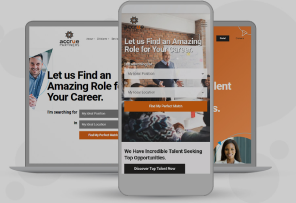Design is a reflection of your company’s personality. and defines how people perceive you. Good design is also a huge differentiator in today’s digital world and it is a key component of an effective digital marketing strategy that is built to bring awareness to your brand. Web design and digital marketing design are rooted in similar concepts. But they diverge when you examine the purpose and intent of each. In this article, we focus on elements of design used in digital marketing and the importance of good design in your digital marketing strategy.
What Does Digital Marketing Design Cover?
Digital marketing design refers to all the tools used in digital marketing, such as:
Content creation pieces - infographics, whitepapers, etc.
- Social media platforms
- Digital ads
- Google Display ads
- Design for email marketing
- Templates
- Newsletters
- Promotional emails
- Company announcements
Why Is Digital Marketing Design Important?
Digital marketing design is part of the overall message delivery your organization delivers to customers. Simply said, your company’s messages should have both creative elements and strong messaging to connect with potential customers. Here’s how strategic digital marketing design elevates your company positioning and generates leads:
Attracting Attention
Making an eye-catching ad is relatively easy compared to marketing emails – that’s where a designer proves their game. For starters, look at marketing emails’ click-to-open rates; the highest is just 19.36%. Conversely, email marketing is a valuable tool for your company because it connects your brand to the individual customer. But those customers have to click on your emails first – and yes, you can design even the subject line.
Maintain Interest & Prove Your Value
A well-constructed design will also keep people interested in what you have to say. As your prospects move throughout their journey with your brand, you’ll need to present the value your company offers and provide them a business case for becoming your customer. Consider high-quality whitepapers or compelling case studies that:
- Position your company as industry experts and thought leaders.
- Convey the value your company offers and why prospects need to work with you.
- Demonstrate the success your customers have while explaining how your company can achieve similar results for the reader.
But these pieces of content require a greater time commitment from the reader. To keep them engaged, it's important to use the right colors in your design, place iconography in relevant places, insert graphics to accentuate key points, and use compelling photos that help tell the story. If you do, your reader will stay engaged and is likely to consume additional content making them more likely to convert.
Making Your Ad Memorable
According to Forbes, the average US consumer is exposed to 4,000 to 10,000 ads per day. That number explains why your messages have to stand out from the crowd so that your company will be remembered. While social media ads are generally short, design is still very important so that it piques the interest of your target audience When designing ads its important to:
- Keep it simple.
- Typography should have a clear hierarchy.
- Experiment with color schemes that fit your brand.
- Convey a clear message.
- Choose powerful imagery that makes a statement.
- A strong call to action.
- Test, and more testing.
Motivate & Convert
You want your prospects to see your ads and take action. The right design will get motivated people to engage with your brand and put them on a course to convert to a lead or new business for your company. It's important when designing that you choose pictures, fonts, and text placements that will resonate with your target audience and your user personas. A thoughtful and interesting design is a key component to the success of your digital marketing strategy.
Contact our team today to learn how our digital marketing team can help create the content your company needs to stand out from the competition.



